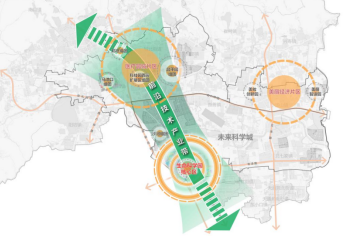HAIRPIN PROTOCOL v2.1
Oligo design for insertion into BseRI BamHI cut pSHAG vectors.
Using sense, coding sequence of any gene....
(N1, N2, N30, N31, are numbered positions)
1) Find 5'-N1 NNNNN….NNNNNNNNNN C N30 N31-3'
The oligo must end in a “C” so that pol III, which initiates at a “G” in the U6
promoter, will initiate precisely at the first base of the antisense strand
2) Get reverse complement of (1)
5'- N31’ N30’ G N’N’N’N’N’N’…..N’N’N’N’N’N’N’N’N’N1’-3'
3) remove N30’ N31’ to get
5'- G N’N’N’N’N’N’N’N’…..N’N’N’N’N’N’N’N1’-3'
4) Add 5'-GAAGCTTG-3' to 3'END to get
5'- G N’N’N’N’N’N’N’N’N’…..N’N’N’N’N’N’N1’GAAGCTTG -3'
5) OPTIONAL (to reduce hairpin formation by DNA oligos prior to ligation)
From (1)
in positions N2 through N28
convert every third base possible
from A to G or from C to T
such that
A) adjacent bases are not changed
B) more than 4 bases are not changed
C) homopolymeric runs greater than 6 bases in length do not result
6) To the 3'END of (4) ADD (5) to get
5'- G N’N’N’N’N’N’N’N’N’….N’N’N’N’N’N’N1’GAAGCTTG N1
NNNNNNN…..NNNNNNNN C N30 N31
8) Add pol III terminator TTTTTT to get
5'- G N’N’N’N’N’N’N’N’N’….N’N’N’N’N’N’N1’GAAGCTTG N1
NNNNNNN…..NNNNNNNN C N30 N31 TTTTTT
The inclusion of the HindIII site allows for rapid identification of clones containing
a hairpin.
9) Drop G to get
5'- N’N’N’N’N’N’N’N’N’….N’N’N’N’N’N’N1’GAAGCTTG N1
NNNNNNNN….NNNNNNN C N30 N31 TTTTTT = oligo A
10) Get reverse complement of (9)
11) to (10) Add GATC to 5’ end
12) to (11) Add CG to 3’ end = oligo B
Ligate annealed, kinased oligos into BseRI BamHI cut pSHAG vectors.
The resulting vectors can be used in transient transfections.
Alternatively, the U6 hairpin region can be transferred to a variety of mammalian
vectors using LR clonase enzyme and appropriate Gateway acceptor vectors.







